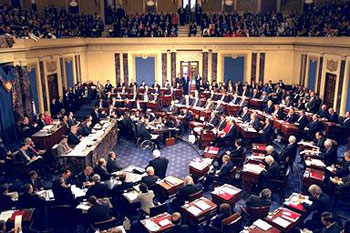 Friday, the Chief Actuary of the Centers for Medicare & Medicaid Services issued a report estimating that the Senate health reform bill, H.R.3590, would increase federal costs $365.8 b. FY10-FY19. Today, the President’s Council of Economic Advisers estimated that the Senate bill would reduce federal spending on Medicare and Medicaid by 0.7% annually FY16-FY19. CEA chose that period to get beyond the initial increases these programs would experience as roughly 30 m. Americans gain insurance coverage. How can the two studies comes to opposite conclusions?
Friday, the Chief Actuary of the Centers for Medicare & Medicaid Services issued a report estimating that the Senate health reform bill, H.R.3590, would increase federal costs $365.8 b. FY10-FY19. Today, the President’s Council of Economic Advisers estimated that the Senate bill would reduce federal spending on Medicare and Medicaid by 0.7% annually FY16-FY19. CEA chose that period to get beyond the initial increases these programs would experience as roughly 30 m. Americans gain insurance coverage. How can the two studies comes to opposite conclusions?
The CMS study covers all federal health costs over 10 years, and the CEA study covers just Medicare and Medicaid for three years. It just goes to show that you can find the conclusion you want depending upon how you look at the data. CEA argues, with some justification, that the budget effects of the first 6 years of the Senate bill reflect expanding coverage. Cost savings don’t kick in until year 7, so it’s not fair to count the first 10 years. On the other hand, the CMS analysis correctly questions whether health providers can provide the care of those 30 m. additional insured Americans at the costs assumed. The analysts in both cases had to make that assumption. No one knows for sure how it will turn out.
Soon the Congressional Budget Office will weigh in with its estimate, also based upon that assumption. CBO’s estimate will have a lot of impact on what further changes have to be made to health reform to gain Senate passage.
Disclaimer: This page contains affiliate links. If you choose to make a purchase after clicking a link, we may receive a commission at no additional cost to you. Thank you for your support!


Leave a Reply